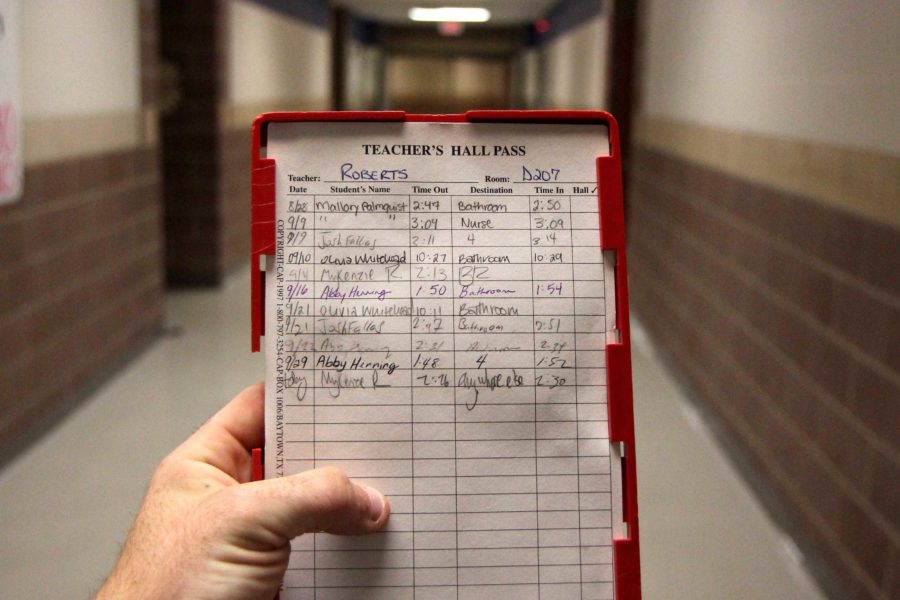Editorial: Limiting bathroom breaks sends wrong message
Some teachers have implemented a new bathroom pass policy in attempt to regulate students’ time away from class.
October 9, 2015
The first semester of a new school year has brought an assortment of new classroom policies, on matters as age-old as eating in class to more recent rules on checking out technology.
A specific policy on bathroom procedures, however, has changed the way many students in the math hall spend their class time. Some AP math and precalculus classrooms have established bathroom policies that prohibit students from using the restrooms more than two times per semester. Students are required to use a bathroom pass and, after exhausting their two bathroom privileges during the course of the approximately 17-week semester, are expected to make up any missed class time before or after school.
While this new policy certainly has its benefits for both students and teachers, the rule is both unnecessary and patronizing in most classroom circumstances.
We all know students who use the same class each day to take prolonged restroom breaks and seem to absolutely refuse to use class time for its true intent. Every student can probably own up to having wasted time in class by taking a water or bathroom break. But the majority of students recognize that class time is a valuable resource.
Many of the students that are enrolled in Precalculus, AP Statistics or AP Calculus are 18 years old, or are at least upperclassmen. AP classes are meant to prepare students for college and college-level work, and limiting the number of times students can use the bathroom is more indicative of “spoon-feeding” students than equipping them for the independence and responsibility that comes with college or a career.
If the patronized feeling that an 18-year-old student experiences upon being asked how many times they have been to the bathroom so far is the goal of this policy, then the message has already been received by dozens of students restricted from going to the bathroom (even after finishing a test, in relatively “free” time). Though the teachers who have adopted this bathroom policy presumably only wish to make the most out of the short time that students are present in class, the procedures are not the most effective way to demonstrate this.
Two bathroom breaks per semester are arguably not enough for any student. And is it necessary for students to make up class time for additional trips to the restroom after the two allowances have been used? The two or three minutes that students are absent from class are not usually times that are worth making up. Furthermore, requiring students to carry a hall pass does not, as intended, encourage high school juniors and seniors to use class time wisely, but instead treats those AP students as elementary and middle school teachers treat their more immature students. Instead of fostering a sense of responsibility, this policy makes students believe in their own inferiority and immaturity.
There are undeniable advantages to this policy, as the childish actions of some students call for stricter bathroom rules. But the actions of the few should not determine the privileges of all, and teachers might have more success in fostering a wise usage of class time by simply addressing the few students that misuse their time rather than punishing adults (or near-adults) by a degrading policy.




Keith Christian • Oct 13, 2015 at 2:30 pm
Interesting article. I would hope that in the future, when you take issues with a policy, that you would speak directly to those who have created the policy rather than just making assumptions about its origin. As a teacher who has this policy I would be glad to explain the rationale, if you would like to know.